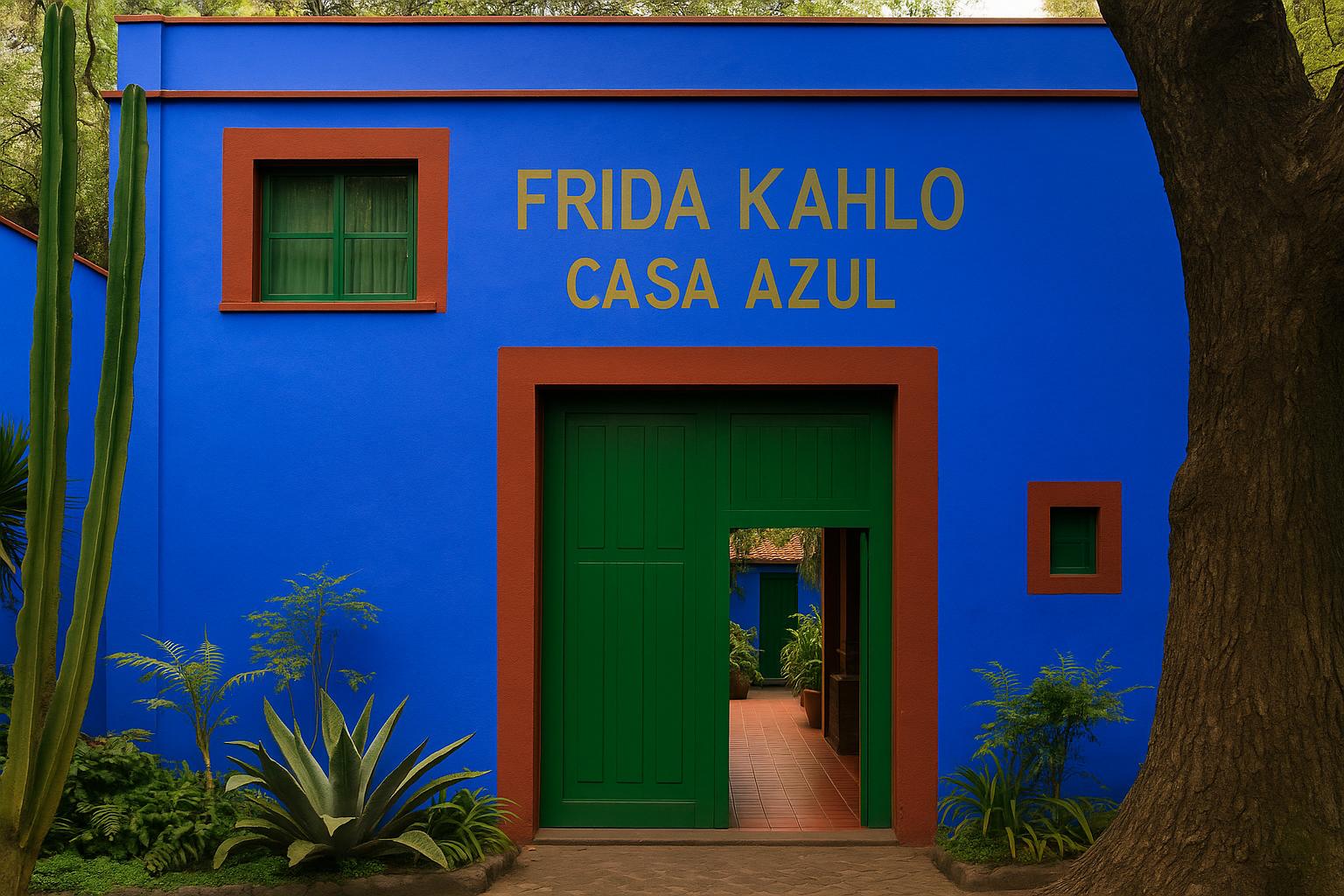Contents
The Origin and Historical Context of Casa Azul
Frida Kahlo’s Casa Azul, or the Blue House, is nestled in the culturally rich neighborhood of Coyoacán in Mexico City. This iconic house was constructed in 1904 by Guillermo Kahlo, Frida Kahlo’s father, showcasing more than just a familial dwelling. Through the years, Casa Azul has grown to symbolize an intersection of Kahlo’s personal journey and the expansive narrative of Mexican art and history. Understanding Casa Azul offers a window into Frida Kahlo’s life and the historical currents that shaped her identity and artistry.
The Architectural Significance
The architecture of Casa Azul captivates with its striking azul anil (indigo blue) exterior, which is not merely an aesthetic choice but also a cultural beacon. This vibrant blue hue resonates with the essence of Mexican artistry and architecture, embodying an indigenous ethos and celebrating the national identity. For Kahlo and her husband, Diego Rivera, the color was a manifestation of their pride in their heritage. The house itself merges elements of Mexican folk art with influences from colonial architecture, resulting in a unique tapestry that celebrates native styles and art forms.
A Museum of Personal History
Today, Casa Azul is transformed into the Frida Kahlo Museum, which serves as a portal into the life and art of the iconic Mexican painter. The museum retains much of the original character from Frida’s lifetime, with its rooms echoing her presence through original decor and personal articles. From her personal studio to an array of decorative artifacts and beloved pieces of clothing, each space narrates her artistic voyage, tribulations, and triumphs.
The walls of Casa Azul, adorned with these intimate pieces, invite visitors into the narrative of Kahlo’s life. Her experiences, chronic illnesses, and undying spirit are all etched into the very fabric of the house, making it far more than a static museum—it’s a living testament to her legacy.
The Cultural Influence
Casa Azul has transcended its origins to become a beacon of cultural significance. Artists and admirers from across the globe are drawn to this historic site, finding inspiration in Kahlo’s bold exploration of identity, gender, and politics. The museum’s exhibitions continually expand on her legacy, providing modern artists and visitors a chance to engage with her revolutionary ideas and the depth of her artistic contributions.
The influence of Casa Azul extends beyond its walls, acting as a cultural catalyst in Coyoacán, a place where artists congregate to draw from the rich history and spirited creativity that Kahlo exemplified throughout her life.
Connection to Indigenous Heritage
Frida Kahlo and Diego Rivera shared a profound respect and love for indigenous Mexican cultures, which is reflected throughout Casa Azul. Inside, the collection of pre-Hispanic artifacts and Mexican folk art embodies their commitment to preserving cultural heritage. Both the interior and exterior of the house resonate with the echoes of Mexico’s indigenous past.
The gardens of Casa Azul, lush with native plants, are designed to evoke pre-Hispanic landscapes. These carefully maintained spaces reflect both the thematic diversity and the commitment to authenticity that Kahlo and Rivera cherished. The integration of traditional design principles into the aesthetic of the house reinforces their sincere dedication to their roots.
Additionally, the respect for indigenous culture permeates through the artwork and artifacts displayed within the Blue House, encouraging visitors to appreciate not only Kahlo’s art but also the rich cultural history it represents.
Overall, Casa Azul is an emblem of cultural confluence and personal expression. Its significance extends far beyond its identity as a childhood home or a creative space; it is an enduring tribute to Frida Kahlo’s artistic genius and profound cultural influence. The house continues to inspire those who visit, cultivating a deeper appreciation for Mexican art and the nuances of Kahlo’s personal saga.
Throughout its existence, Casa Azul has maintained a role as a lively participant in the preservation and promotion of Mexican cultural and artistic heritage. It is a place where past and present convene, where the vibrancy of color and the spirit of resistance in Kahlo’s art draw thousands to experience the world as she saw it—one filled with beauty, pain, passion, and unyielding determination.
The story of Casa Azul is an ongoing one, as it continues to be a pivotal place for those seeking to connect with the complexities and richness of Frida Kahlo’s life and the artistic heritage of Mexico. As visitors walk through its halls and gardens, they are not only retracing the footsteps of an artist but becoming part of a larger dialogue about culture, identity, and the transformative power of art.
Indeed, Casa Azul is a cornerstone of Kahlo’s legacy, a vibrant monument to the artist’s unbridled creativity and her devotion to celebrating and preserving the unique cultural tapestry of Mexico.

